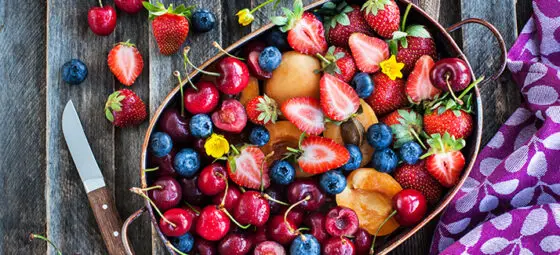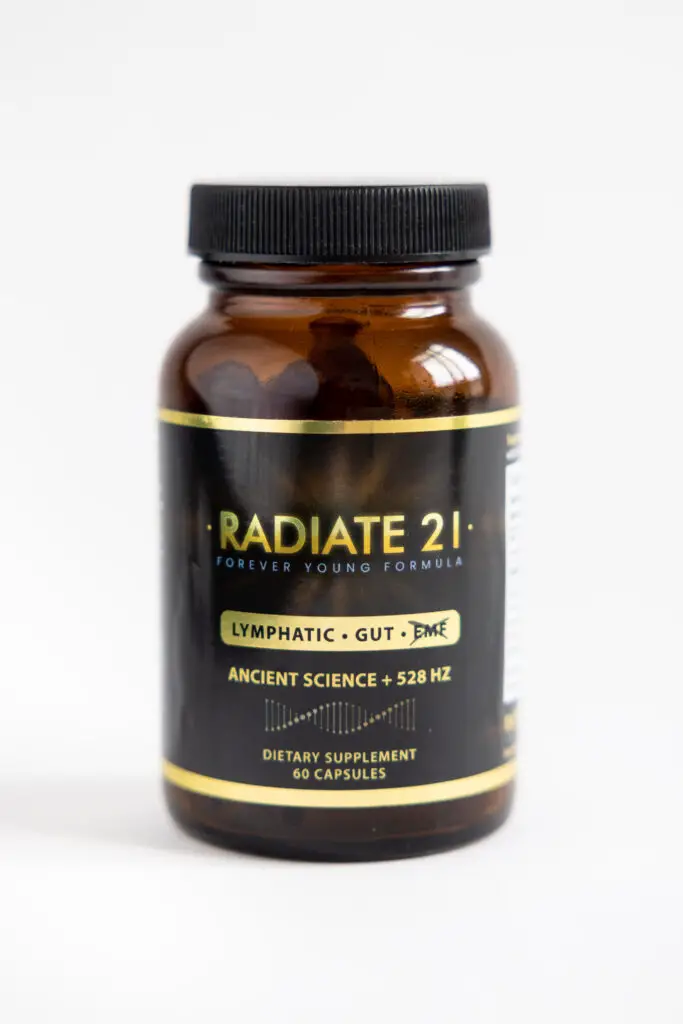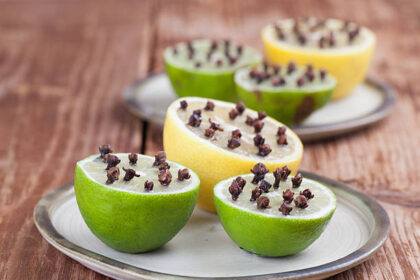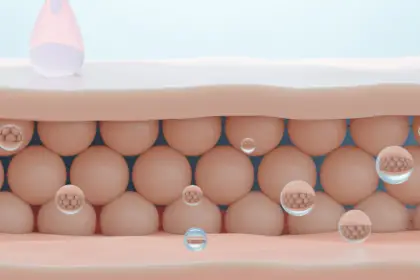Our health and wellbeing depend on consuming a wide spectrum of phytonutrients like anthocyanidins, compounds found in plants that help protect cells from damage. Among the most potent phytonutrients are anthocyanidins, a class of flavonoids that provide vibrant color to fruits and vegetables. A growing body of research reveals that increasing our intake of anthocyanidins can support eye health, brain function, collagen production, and exercise recovery.
In this article, we’ll explore how anthocyanidins work in the body and analyze studies demonstrating their health-promoting effects. As powerful antioxidants, anthocyanidins help counteract damaging free radicals and reduce inflammation. Their ability to cross the blood-brain barrier enables them to protect the brain, enhance cognition, and potentially delay neurodegenerative disease. We’ll also examine research linking anthocyanidins to improved vision and quicker muscle recovery after strenuous physical activity.
While anthocyanidins are found in many vibrantly colored plant foods, some contain higher concentrations than others. We’ll build up to revealing the top food sources, outlining how making specific additions to your diet and habits can help harness the benefits of these potent phytonutrients. Discover how this special class of flavonoids can enhance your health, and which colorful fruits and vegetables deliver the highest concentrations.
All About Anthocyanidins
Anthocyanidins are a class of flavonoids, which are phytonutrients found in plant foods. Flavonoids are polyphenolic compounds that have antioxidant properties and help defend plants from stresses like pests, pathogens, and UV radiation damage. There are over 600 identified natural flavonoids that are divided into subclasses based on their chemical structure. Anthocyanidins represent one of these subclasses.
Chemically, anthocyanidins have a basic flavylium cation structure consisting of two aromatic rings bound together by a three-carbon chain. Attached to this structure are different hydroxyl groups and sugars like glucose, galactose, and arabinose. There are over 25 naturally occurring anthocyanidins that have been identified.
Some of the most common include cyanidin, delphinidin, pelargonidin, peonidin, petunidin, and malvidin. One of the somewhat uncommon, but most potent of all are called proanthocyanidins. I will reveal one of the only places you can find the proanthocyanidins at the end of this article.
The different chemical structures of individual anthocyanidins contribute to their shade of color. Cyanidin gives a cherry red hue, malvidin provides a purple-red, and delphinidin appears more blue-purple. When the sugars attached to anthocyanidins are removed through cooking or digestion, they become anthocyanins, which are also bioactive antioxidant pigments.
Both anthocyanidins and anthocyanins are water-soluble compounds. They tend to be most highly concentrated in the skins, pulps, and juices of berries, cherries, grapes, and other brightly colored fruits and vegetables. By increasing your dietary intake of foods rich in these colorful flavonoids, you can leverage their many health benefits.
Studied Health Benefits of Anthocyanidins
Cardiovascular Health
Studies show anthocyanidins help protect the heart and blood vessels. They improve blood flow by strengthening capillaries and inhibiting platelet aggregation. Anthocyanidins also reduce LDL cholesterol oxidation and lower blood pressure.
Anticancer Effects
Research indicates anthocyanidins defend against cancer through several mechanisms. They induce cancer cell apoptosis (programmed death), inhibit tumor growth and spread, and protect DNA from damage. Studies link higher anthocyanidin intake to reduced cancer risk.
Antimicrobial Properties
Anthocyanidins have natural antimicrobial effects. They prevent the growth of certain bacteria that cause foodborne illnesses. When applied topically, anthocyanidins may aid wound healing and protect skin from infections.
Antidiabetes Impact
Anthocyanidins help control blood glucose levels by boosting insulin production and increasing pancreatic cell viability. Human and animal studies show they can reduce hemoglobin A1C levels and resist diabetes complications.
Eye Health
Anthocyanidins’ antioxidant effects help prevent macular degeneration, cataracts, and loss of night vision. They improve ocular blood flow and protect the eyes from damage caused by UV light exposure and blue light from digital devices.
Neuroprotective Activity
The anthocyanidins ability to cross the blood-brain barrier enables them to protect neurons and enhance cognition. Studies link higher intake to improved memory and motor coordination. Anthocyanidins may help delay Alzheimer’s and Parkinson’s diseases. By incorporating more anthocyanidin-rich foods into your diet, you can leverage these potent health benefits.
The Top Food Sources Containing Anthocyanidins
- Black Raspberry
Black raspberries have the highest anthocyanidin content of all foods, providing approximately 600-1700 mg per 100 grams. The high levels provide potent antioxidant, anti-inflammatory, and anticancer effects. - Chokeberry
Also called aronia berry, chokeberry has the second highest anthocyanidin content at around 250 mg per 100 grams. Its antioxidants support heart health, control blood glucose, and protect the liver. - Huckleberry
This dark blue berry provides about 120 mg of anthocyanidins per 100 grams. Studies show huckleberries improve insulin sensitivity and reduce obesity-associated inflammation. - Bilberry
With about 100 mg of anthocyanidins per 100 grams, bilberries aid night vision, protect eye health, and improve circulation. - Elderberry
Providing approximately 60-80 mg per 100 grams, elderberry anthocyanidins treat colds, flu, and infections. They also support heart health. - Blueberry
A well-known anthocyanidin source, blueberries contain around 30 mg per 100 grams. Their antioxidants boost cognition, protect the brain, and reduce diabetes risk.
Other anthocyanidin-rich foods include black currant, cranberry, blackberry, red cabbage, red onion, figs, lingonberry, sour cherry, red/purple potatoes and carrots, eggplant, purple asparagus, and plum. Incorporating more of these colorful fruits, veggies, and berries into your diet lets you harness the power of anthocyanidins.
Proanthocyanidins
Proanthocyanidins are a specialized type of anthocyanidin belonging to the flavonoid family. Sometimes called condensed tannins, proanthocyanidins consist of polymers made up of catechin and epicatechin subunits.
Research shows proanthocyanidins have even stronger antioxidant, anti-inflammatory, and vascular protective effects than other anthocyanidins. However, they occur in nature in lower concentrations than other types like cyanidin and malvidin.
One of the richest sources of proanthocyanidins in the world is a tree sap called dragon’s blood or sangre de grado. This red sap-like substance comes from several species of Croton trees native to the Amazon region. Dragon’s blood contains very high proanthocyanidin levels ranging from 6,800-25,000 mg per 100 grams.
Studies on dragon’s blood find that its proanthocyanidins have exceptional antioxidant capacity exceeding vitamin C and E. Dragon’s blood promotes wound healing, fights viruses, bacteria, and fungi, reduces inflammation, and protects cardiovascular health. Topical dragon’s blood sap may also help heal skin due to UV damage.
When shopping for supplements, look for sustainably harvested dragon’s blood along with probiotics to support gut bacteria. A multi-botanical supplement like Radiate 21 contains dragon’s blood along with 20 other natural ingredients to provide full-body healing and an anti-aging boost. Consider adding this synergistic blend to your routine to maximize the benefits of proanthocyanidins and other protective phytonutrients.
Watch this video to learn more:
Click Here To Learn More About Radiate 21
When it comes to leveraging the power of real food for better health, vibrantly colored fruits and vegetables should be at the top of your list. As we’ve explored, the potent antioxidants called anthocyanidins give many plant foods their red, blue, and purple hues.
By filling your plate with healthy options like berries, purple potatoes, red cabbage, and black rice, you can increase your intake of these beneficial compounds. Pairing an anthocyanidin-rich diet with targeted supplementation of dragon’s blood provides even greater antioxidant, anti-inflammatory, and anti-aging effects.
So take a fresh look at produce aisles and farmers markets for inspiration to add more color to your meals. Not only will the bright tones liven up your kitchen creations, the phytonutrient bounty will nourish your body from the inside out. When it comes to anthocyanidins and other protective plant pigments, eating the rainbow truly pays off for your health.






